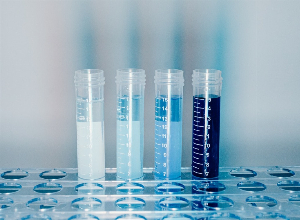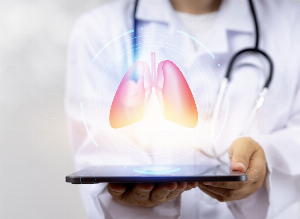Saliva Test for Lung Cancer
Published 24 Feb 2016

A new "liquid biopsy" that can detect biomarkers of lung cancer in saliva is moving closer to becoming a reality.
This noninvasive method is able to detect circulating tumor DNA in saliva and has the potential to dramatically cut waiting time for biopsy results, as well as reduce cost and inconvenience to patients.
In a presentation given at the 2016 Annual Meeting of the American Association for the Advancement of Science (AAAS), David T. W. Wong, DMD, DMSc, Felix and Mildred Yip Endowed Professor and associate dean of research, School of Dentistry, University of California, Los Angeles, discussed a new prototype of the device, called electric field–induced release and measurement (EFIRM), that is able to detect biomarkers in saliva for non-small cell lung cancer (NSCLC).
The device has a high degree of accuracy in comparison with current sequencing technology, according to Dr Wong, and can assist with clinical treatment decisions involving tyrosine kinase inhibitors (TKIs) in patients with NSCLC.
It is able to detect actionable EGFR mutations in NSCLC patients with 100% concordance with biopsy-based genotyping, Dr Wong said, and it can detect the most common EGFR gene mutations that are treatable with TKIs, such as gefitinib (Iressa, AstraZeneca Pharmaceuticals LP) or erlotinib (Tarceva, Genentech/Roche).
"The first indication for the new test will be lung cancer," Dr Wong told Medscape Medical News. "The majority of lung cancers are non–small cell lung carcinomas, in which 20% have actionable mutations in the EGFR gene that can be effectively treated with gefitinib to prolong survival of patients by 1 to 1.5 years."
Testing will not be restricted to NSCLC. "After lung cancer, any type of human cancer can be detected, as circulating tumor DNA is universal," he said. "Our finding that the ctDNA comes into saliva and that EFIRM is the technology that can detect the ctDNA with near perfect sensitivity is the perfect platform."
Dr Wong and his team are currently looking at the ability of liquid saliva technology to detect mutations linked to oropharyngeal cancers.
Dr Wong pointed out that EFIRM is the only test thus far that can detect the ctDNA in saliva.
Aside from being a noninvasive test, two of the major "selling points" are the speed at which results can be determined and the low cost.
For example, biopsy results may take several days to be delivered to the physician, with costs of around $2000. Results of a mutational analysis take 2 weeks to deliver, at a cost of $450.
In contrast, according to the researchers, saliva can be collected in 1 to 10 minutes, analyzed in less than 10 minutes, and then delivered by wireless to the physician in seconds. The total projected cost would be less than $25.
The technology can be utilized at the point of care and be reference laboratory–based, Dr Wong explained. "A point-of-care unit can be used in a physician's office to examine a drop of blood or saliva for the ctDNA, and in 10 minutes, accurate information is revealed. If a mutation is positive, a TKI can be prescribed to the patient for treatment to begin immediately.
"The patient doesn't have to wait 2 weeks, undergo invasive bronchoscopy, and spend thousands of dollars," he added.
Ongoing Research and Clinical Trials
Having noninvasive liquid biopsies available has been on the agenda of many researchers for several years, and use of circulating tumor cells has been gaining more traction in cancer care.
Research is ongoing in this area, because it is believed that ctDNA has the potential to be used for screening and diagnosis, for monitoring treatment response, and for detecting minimal residual disease and emerging resistant mutations to targeted therapies.
As an example, one recent study found that analysis of single cells from patients with metastatic castration-resistant prostate cancer is feasible and can be used to assess tumor heterogeneity. This in turn can help guide treatment decisions.
However, most of the research involves use of blood samples to obtain ctDNA, not saliva.
Dr Wong cautioned that their current test should be viewed as a screening tool or for risk assessment only in symptomatic patients and that it is not meant to replace biopsy. "When we have additional data, which we will in due time, it can then be diagnostic," he said.
Clinical trials for regulatory approval will begin in the middle of this year in China and then Taiwan. "The incidence of lung cancer and the mutation frequencies of the driver oncogene EGFR is three times higher in Asia than in the West," Dr Wong explained. "The technology is global, so we envision regulatory evaluation in other parts of the world, particularly when the Asian trials are successful, which should be early 2017."
Medscape
Comments
You will also like
Read the article

 Facebook
Facebook Twitter
Twitter


